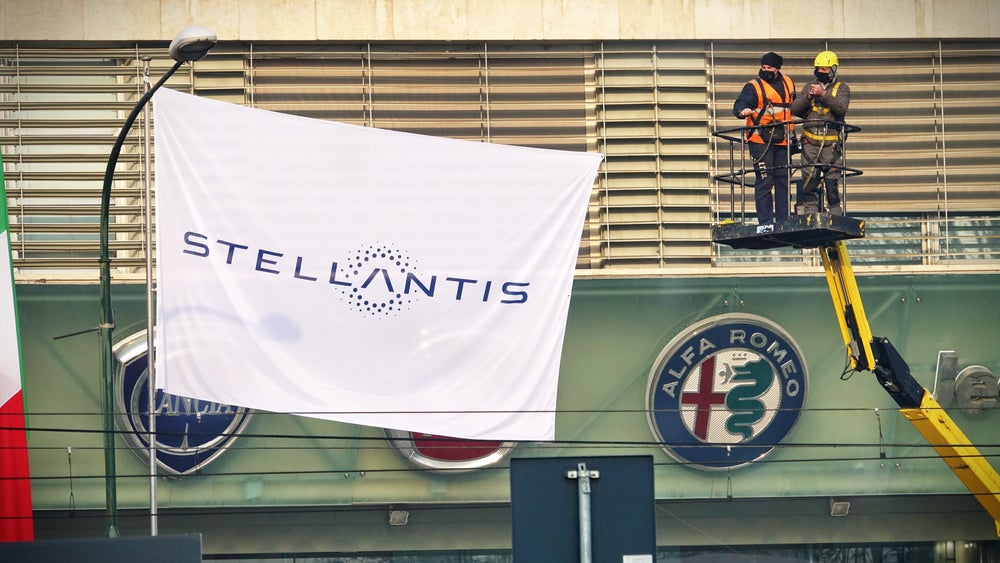
As individuals, the two groups that merged to create Stellantis – FCA and PSA – were pioneers in China’s nascent automotive industry. Beijing Jeep was established in 1984 and Dongfeng-Peugeot Citroën followed in 1992. However, Stellantis’ legacy constituent parts have developed a common weakness in the world’s single largest automotive market.
However, Stellantis’ Chinese production has fallen at a CAGR of 11.9% between 2012 and 2019. At the same time, overall Chinese light vehicle production grew by a CAGR of 4.2%. Contributing factors for Stellantis’ decline in China were its lack of convincing EV options to serve that growing segment, and increasingly competitive vehicles from Chinese automakers that put pressure on lacklustre models from foreign brands.
Now, in a last-ditch effort to turn around its fortunes in China, Stellantis has announced that it will form a strategic partnership with Foxconn – the vast contract assembly company responsible for building notable consumer tech products including the Apple iPhone and games consoles for Microsoft, Sony and Nintendo.
Given the headwinds Stellantis is facing in China, what can Foxconn offer that myriad other joint-ventures, new product onslaughts and turnarounds have failed to deliver over the past decade or so?
For Stellantis, now seems like a wise time to set up shop with Foxconn. While the Taiwanese company has no history building vehicles, it has made no secret over the last year of its ambitions to set up as an electric vehicle manufacturer. Foxconn has even announced its own open-source EV platform called MIH that will be made available to automotive OEMs, and will likely form the basis of any EV models produced by Foxconn for Stellantis.
Before the formation of Stellantis, Foxconn agreed a joint venture with FCA at the start of 2020 to build electric vehicles for the automaker in China. This deal is likely to have evolved into the strategic partnership being discussed today. This joins other moves by Foxconn in the automotive space such as funding for EV startups Byton and XPeng, and investment in China’s Uber rival, Didi Chuxing.
How well do you really know your competitors?
Access the most comprehensive Company Profiles on the market, powered by GlobalData. Save hours of research. Gain competitive edge.

Thank you!
Your download email will arrive shortly
Not ready to buy yet? Download a free sample
We are confident about the unique quality of our Company Profiles. However, we want you to make the most beneficial decision for your business, so we offer a free sample that you can download by submitting the below form
By GlobalDataIn March of this year, at Foxconn’s inaugural event to kick off its automotive supply ambitions, the company said it hoped its new MIH platform would become something akin to Google‘s Android operating system for smartphones. In other words, Foxconn is planning on developing the platform and fundamental operating components needed for an EV, leaving space for automakers, tech companies or other entities to customise it as they see fit to sell to their customers.
Foxconn has also invested in China’s CATL – the world’s second largest lithium-ion battery manufacturer and the largest in China – and is likely to use cells built by the company in its EV platform. Further, Foxconn has announced its ambition to include solid-state batteries in an updated version of the MIH platform, and intends to commercialize the technology in 2024. If successful, this would put it ahead of rivals such as BMW, which has only committed to showing a prototype solid-state powered vehicle before 2025.
In January 2021, Foxconn jointly announced with China’s Geely that the two would set up a 50-50 joint venture to contract manufacture EVs for other automakers. It is unclear whether the models built by this joint venture will be the same ones that will be sold by Stellantis in China, or if they are a separate endeavour. But both agreements are a clear statement of intent by Foxconn to muscle into the EV component sector.
The deal between Stellantis and Foxconn is probably the automaker’s best chance for a renaissance in China. If the venture goes ahead, Stellantis-branded models could leapfrog rivals that have spent billions developing their own EV technology, and come out swinging with cutting-edge EV components giving its new models a fighting chance to carve out market share. This is critical in a market where early starters such as Tesla have now stolen a march on the rest of the industry, with vehicles that are two or more years ahead of their rivals in terms of technical development.
Attracting a global automaker such as Stellantis to its new EV platform and manufacturing network will lend Foxconn additional credibility as it seeks to build out its EV production capacity and draw in other potential customers.
This story was originally published on Just Auto, part of the GlobalData network.




